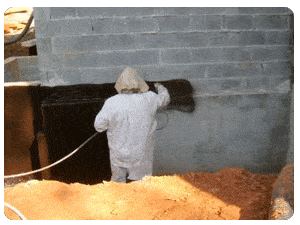The foundation is basically what the house is built on, what keeps the building where it was built, transferring the dead loads and the live loads into the ground.
Water is the source of the vast majority of foundation problems. Wet soil beneath a foundation can swell or lose strength.
And that is only the first reason to keep the foundation dry. And then there is the little problem of wet damp basements and crawl spaces that can breed mold and make below ground interior spaces generally unpleasant. The problem is that typical concrete is not waterproof. Although uncracked (and what concrete is uncracked?) it will typically keep out liquid water, water vapor can still penetrate quite easily. Keeping water drained away from concrete foundations and preventing it from moving through the concrete are essential to a successful structure.
Related: Wet Weather Is A Big Problem For Los Angeles Homes
Accomplishing our goal, then, of draining any water away and ensuring a dry interior space below grade can be relatively simple or fairly involved depending on geographic location, climate, topography, soil or water table conditions, and also the depth of the foundation. There are three components of any system designed to keep water out. These are, from the bottom up:
- Drains to move water away from the bottom of the foundation
- Wall treatment to prevent moisture from moving through the wall and to route water down to the drains
- Ground surface treatment adjacent to the building to direct surface water away
Related: Home Drainage Advise Before Winter Starts!
And remember that since this will mostly be underground when the building is complete, doing it right the first time is critical, because coming back to fix it is an expensive undertaking. A leaky foundation in a residential building can damage finishes and furnishings, even the structure itself. In a commercial building, water can ruin expensive equipment and disrupt vital work. It all adds up to lost money, wasted time, upset customers and sometimes litigation.
Related : What Effect Do the Storms Have on Your Los Angeles Home ?


